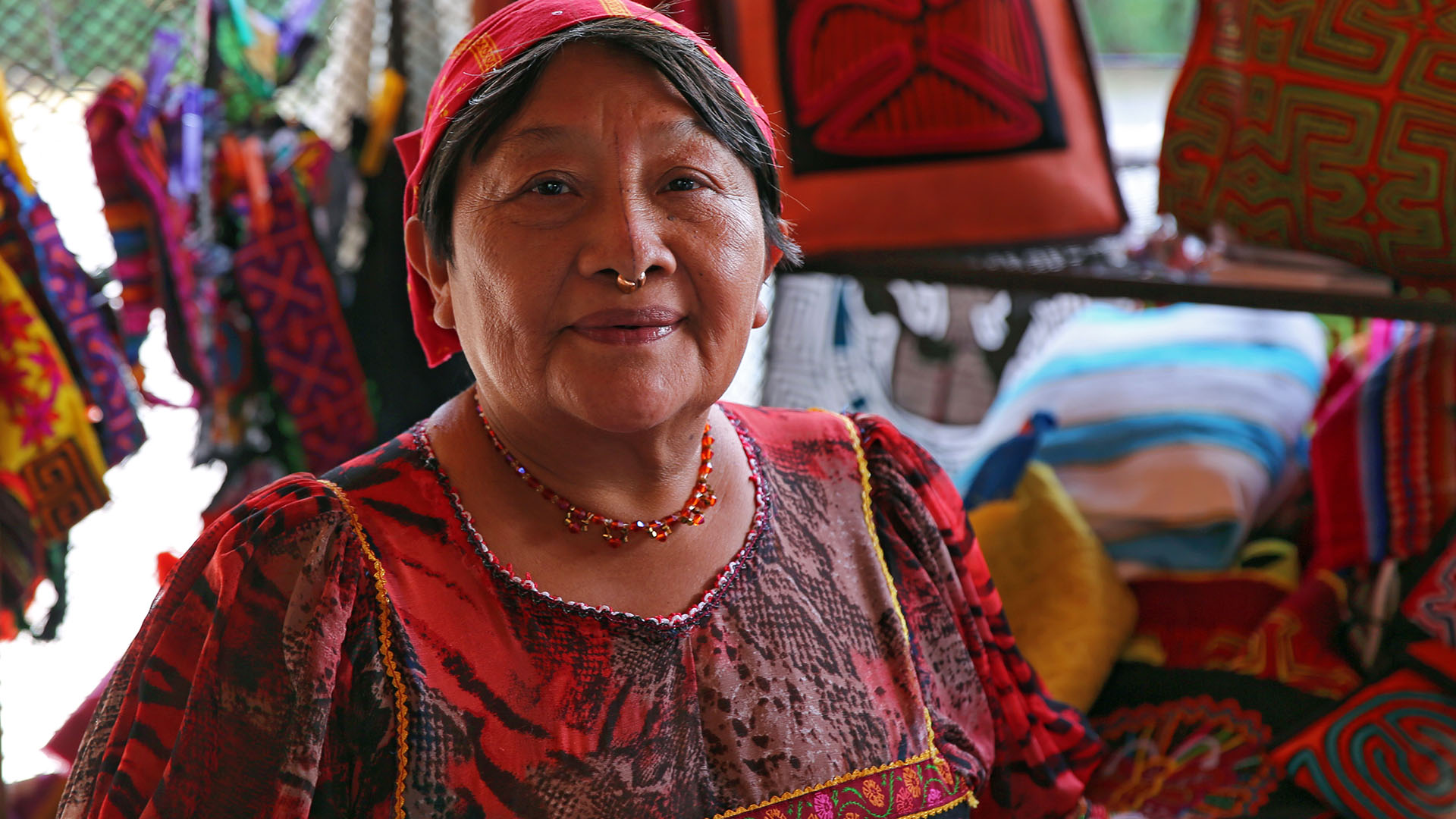
Vibrant Kuna artist showcasing handmade tribal art and crafts, rich with colour and tradition / Credit: iStock.com/GeorgePeters
Panama, a name synonymous with its world-famous canal, often conjures images of massive container ships traversing the narrow isthmus or the gleaming skyline of its capital city. While these icons are undeniably impressive, they represent only the beginning of a much richer, more complex story. The true heartbeat of Panama is not in the Miraflores locks. It is in the misty cloud forests of the highlands, the clear waters of the archipelagos, and the lively traditions of indigenous communities. This is a country where the historical “Path Between the Seas” is more than just a waterway; it’s a living network of diverse ecosystems and cultures waiting to be discovered.
Acknowledging the Gateway: Panama City, Canal, and Casco Viejo
Key landmarks in Panama City offer a starting point for exploring the country’s rich history and natural beauty.
Every journey into authentic Panama rightfully begins at its hub. Panama City serves as a spectacular gateway, where the modern world meets a layered past. The Panama Canal is an engineering marvel that you must see. The Miraflores Visitor Center at the Miraflores Locks shows its huge size and global importance. Nearby, the Amador Causeway, built from rock excavated during the canal’s construction, provides stunning views of the ships entering the Pacific, framed by the iconic Bridge of the Americas.
A short drive from the skyscrapers lies Casco Antiguo (or Casco Viejo), a designated UNESCO World Heritage Site. This historic district is a labyrinth of cobblestone streets, colonial-era churches, and pastel-coloured buildings with wrought-iron balconies. It’s a place to understand the nation’s colonial roots before venturing further afield. These landmarks are the essential prologue, setting the stage for the adventures that lie beyond the city limits.
Explore the Real Panama Beyond the Beaten Path
The true invitation of Panama travel is to look beyond this established itinerary. It’s a call to trade the city’s hum for the call of a toucan, to follow rivers deep into the rainforest, and to connect with the people who are the true stewards of this land. Exploring authentic Panama means discovering a country of astounding biodiversity, from remote Pacific islands to volcanic peaks where two oceans can be seen at once. This guide is your compass to navigate those lesser-known paths, revealing the vibrant, wild, and culturally rich soul of the isthmus.
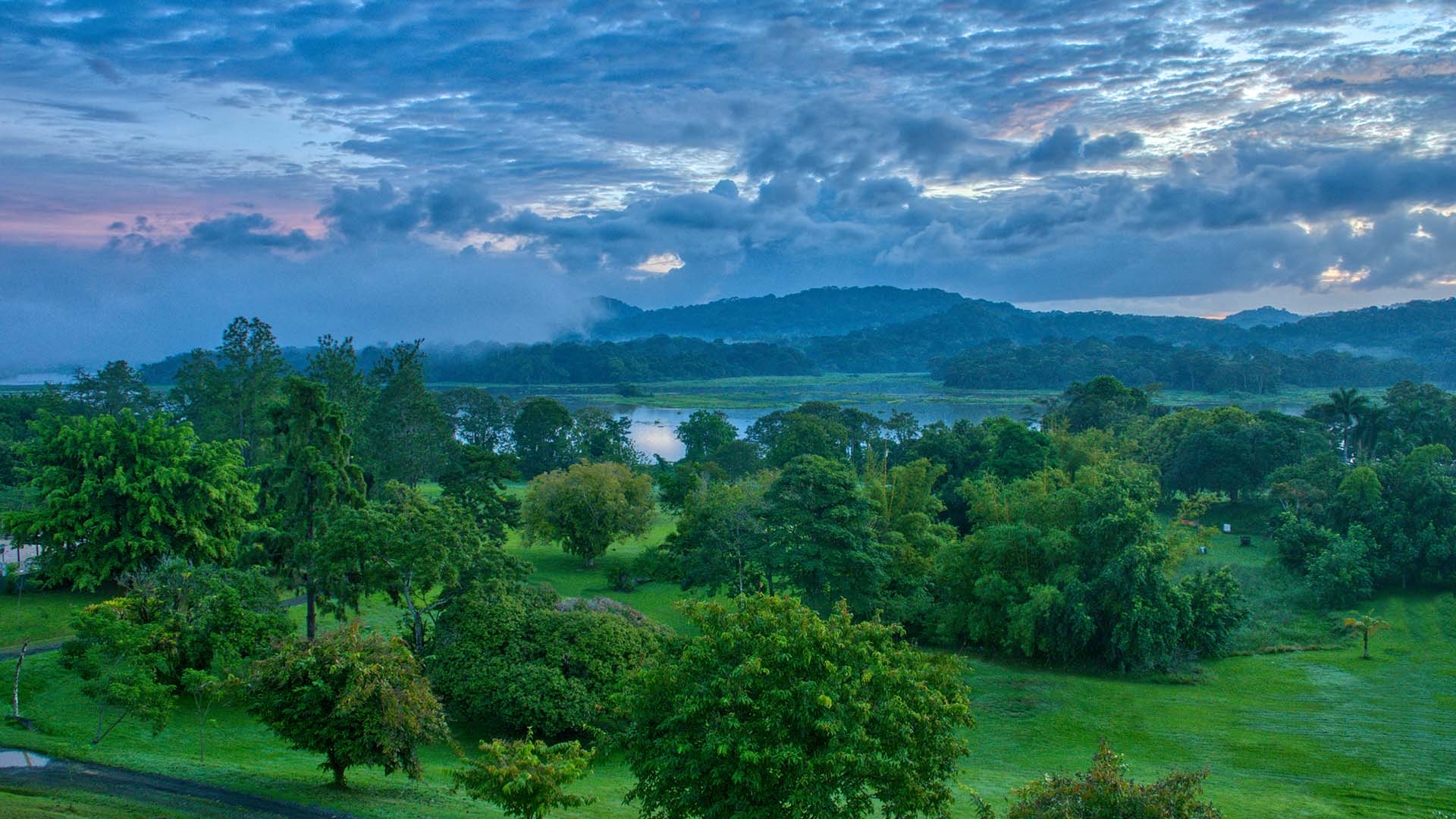
Sunrise colours the Chagres River and Panama Canal at Soberanía National Park, Gamboa / Credit: iStock.com/Bkamprath
The Emerald Veil: Rainforests, Rivers, and Wildlife Adventures
Just beyond the capital’s edge, Panama unfolds into an immense emerald wilderness. Panama’s narrow shape and unique location create biodiversity hotspots. These areas are both easy to reach and very wild. They offer some of the best nature and wildlife experiences in Central America.
Soberanía National Park & The Pipeline Road: A Birder’s Paradise
Less than an hour from Panama City, Soberanía National Park is a sanctuary for nature lovers and a world-renowned destination for birdwatching. The park’s most famous feature is the Pipeline Road, a track that boasts an incredible avian diversity, with over 500 species recorded. Here, birders can spot everything from colourful trogons and toucans to the elusive harpy eagle. Walking these trails is an immersion into a symphony of jungle sounds, with the rustle of capuchin monkeys in the canopy and the flash of blue morpho butterflies adding to the magic. It’s a powerful reminder of the untamed nature that thrives alongside the country’s commercial artery.
Navigating the Chagres River & Gamboa: Deep Within the Rainforest
The Chagres River is the lifeblood of the Panama Canal, feeding Gatun Lake, the vast artificial lake that constitutes a major part of the transit. But its importance extends far beyond engineering. The river basin is home to the Gamboa Rainforest, a lush expanse offering profound immersion. Here, you can take boat tours on the lake, spotting monkeys, sloths, and crocodiles along the banks. For a different perspective, aerial trams lift you into the canopy, providing a bird’s-eye view of the dense jungle. This area shows the balance between human skill and nature preservation. This balance defines Panama.
Coiba National Park: Panama’s Galapagos – A UNESCO Marine Wonderland
On the Pacific coast lies one of Panama’s greatest treasures: Coiba National Park. This UNESCO World Heritage Site was a former penal colony. People left it mostly untouched for decades. This created a very well-preserved marine and land ecosystem. Often compared to the Galapagos, Coiba is a premier destination for diving and snorkeling. Its waters teem with life, including whale sharks, manta rays, sea turtles, and large schools of fish. The park protects the Coiba National Marine Park, one of the largest in the world, safeguarding a critical corridor for marine life and offering a glimpse into a primordial underwater world.

Perfectly aligned coffee rows ripple across rainforest hills in the Panamanian highlands
Cloud Forests & Volcanic Peaks: The Highlands of Chiriquí
In western Panama, the province of Chiriquí offers a dramatic shift in landscape and climate. The sweltering coastal humidity gives way to cool, misty highlands dominated by the country’s highest peak. This is a region of rich volcanic soil, world-class coffee, and breathtaking mountain vistas.
Ascending Volcán Barú: Panama’s Highest Point and Unique Ecosystems
At 3,475 meters (11,401 feet), Volcán Barú is the only place in the world where, on a clear day, you can see both the Pacific Ocean and the Caribbean Sea simultaneously. The hike to the summit is challenging, often started in the pre-dawn darkness to catch the sunrise, but the reward is unparalleled. The volcano’s slopes are covered in lush cloud forests, home to a unique array of flora and fauna, including the resplendent quetzal. The journey through these changing ecosystems is as memorable as the view from the top.
Cerro Punta & Boquete: Coffee Plantations, Flowers, and Cool Mountain Breezes
Nestled in the foothills of Volcán Barú are the charming mountain towns of Boquete and Cerro Punta. This region, known as the “Valley of Flowers and Eternal Spring,” is the heart of Panama’s coffee production. A visit to a local coffee plantation is an essential experience, offering insight into the meticulous process of growing, harvesting, and roasting some of the world’s most prized coffee beans. The cool mountain air, scenic hiking trails, and vibrant gardens make this area a perfect retreat for those seeking nature and tranquility.
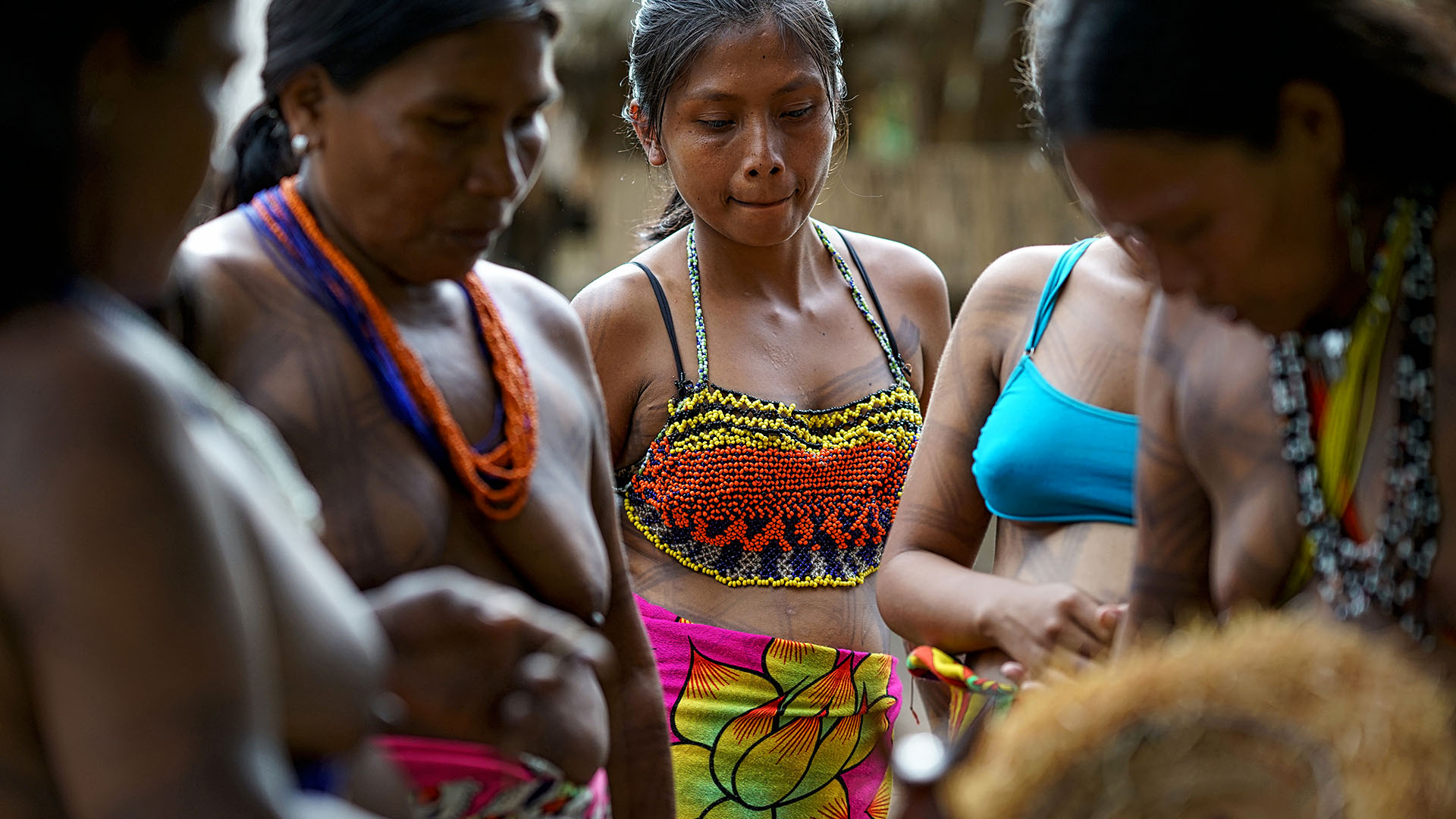
Embera Wounaan Indigenous community, approximately 250 km from Panama City / Credit: iStock.com/Jose Angel Murillo
Voices of the Land: Authentic Cultural Encounters
Panama’s identity is deeply rooted in its indigenous cultures, which have persevered and continue to shape the nation’s character. Engaging with these communities offers a profound understanding of the country’s human history and its enduring connection to the land.
Immersing in Emberá Culture: A Journey to Indigenous Traditions on the Chagres
Along the banks of the Chagres River, accessible by traditional dugout canoe, are several Emberá villages. A visit here is a chance to step away from the modern world and learn about the Emberá way of life. These communities welcome visitors to share in their culture, from their knowledge of medicinal plants and intricate basket weaving to their traditional dances and body painting. Responsible tour companies often arrange respectful visits. These visits provide important economic support. They also encourage real cultural exchange.
Guna Yala: Beyond the Postcard – Understanding the Guna People and Their Islands
The autonomous territory of Guna Yala, also known as the San Blas Islands, is a breathtaking archipelago of 365 coral islands dotting the Caribbean coast. This region is governed by the Guna people, who have maintained their political autonomy, language, and traditions. Beyond the idyllic white-sand beaches and turquoise waters, a trip to Guna Yala is an immersion into a unique matriarchal society. Visitors stay in simple, rustic places. They learn about Guna cosmology. They also admire the famous molas, which are detailed textile art that tells stories of their culture.
Echoes of the Past: Panama Viejo and Portobelo – UNESCO Legacies Beyond the Capital
Panama’s history as a crossroads is etched into its ruins. While Casco Viejo is a living historic district, Panama Viejo represents the original 16th-century Spanish settlement on the Pacific, which was sacked by pirates in 1671. Today, the ruins of its cathedral and stone buildings stand as a poignant UNESCO World Heritage testament to its former glory. On the Caribbean side, the fortifications of Portobelo, another UNESCO site, tell the story of the Spanish treasure fleets and the constant threat of buccaneers. These sites provide a tangible link to the era that first placed Panama at the center of global trade.

Tropical fruit stand in Bugaba, Panama with vibrant outdoor display of pineapples, mangoes, and bananas / Credit: iStock.com/Markpittimages
Savouring Panama: Local Flavours and Everyday Rhythms
To truly understand a country, one must taste its food and observe its daily life. Authentic Panama reveals itself in its bustling local markets, its regional culinary specialties, and the rhythm of its commerce.
Culinary Discoveries: Regional Delights Beyond Panama City
Panamanian cuisine is a flavourful fusion of Spanish, African, and Indigenous influences. Beyond the capital’s international restaurants, you’ll find regional specialties that tell a story. In the highlands, enjoy fresh trout and hearty stews. On the Caribbean coast, coconut milk is a staple in seafood dishes like rondón. Don’t miss trying sancocho, a hearty chicken soup considered the national dish, or fresh ceviche from a seaside vendor.
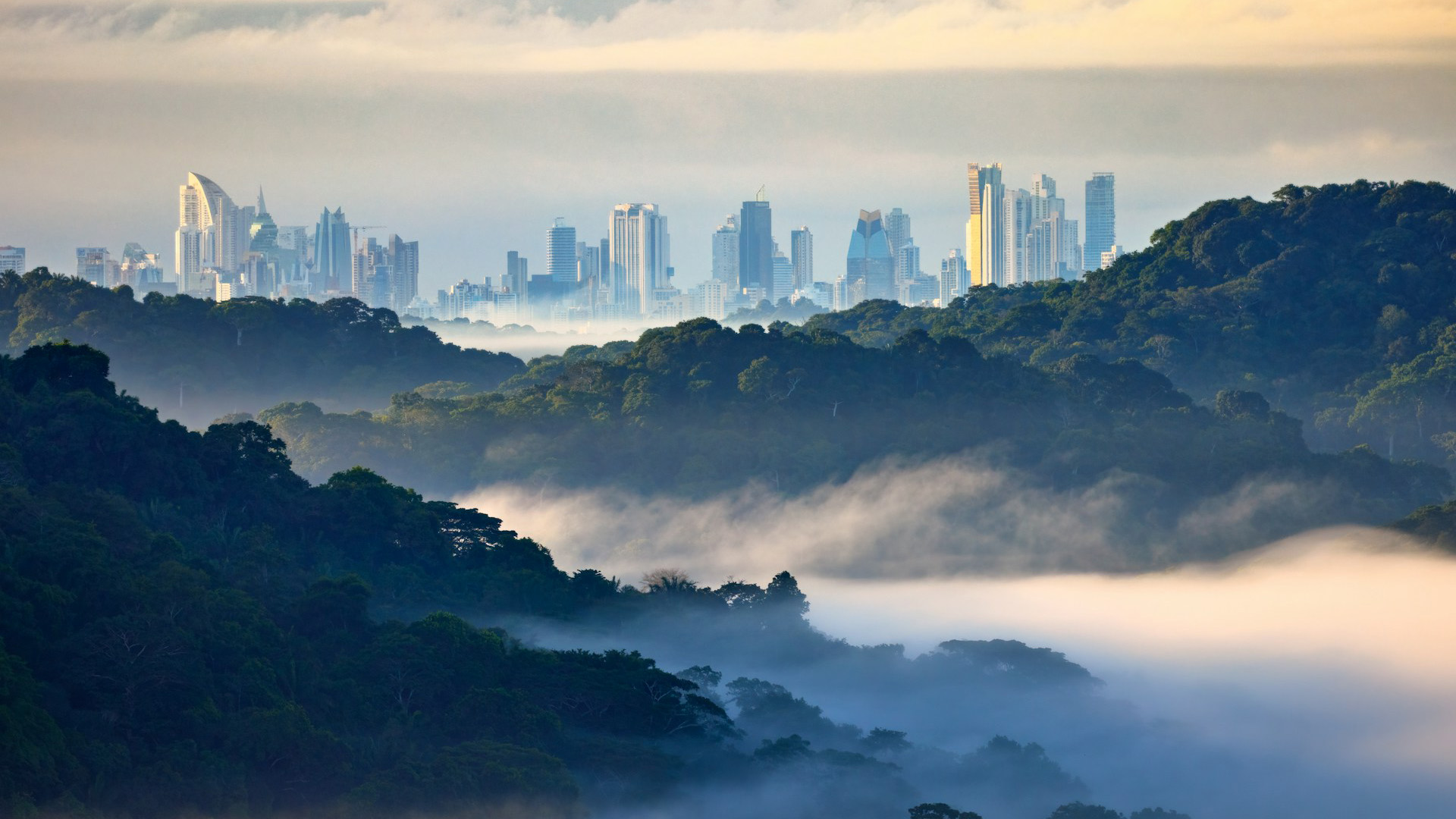
View of the Panama City with rain forest around Panama Canal / Credit: Zdeněk Macháček
Understanding Panama’s Unique Currency System: The Balboa and the US Dollar
Panama’s official currency is the Balboa, but it is pegged to the US Dollar, which circulates freely as paper currency. This makes transactions straightforward for many international travelers. To experience the local rhythm, visit a municipal market. Here, you’ll find a vibrant assortment of tropical fruits, fresh produce, and local crafts. It’s an excellent place to practice your Spanish, sample exotic flavours, and see the daily flow of commerce firsthand.
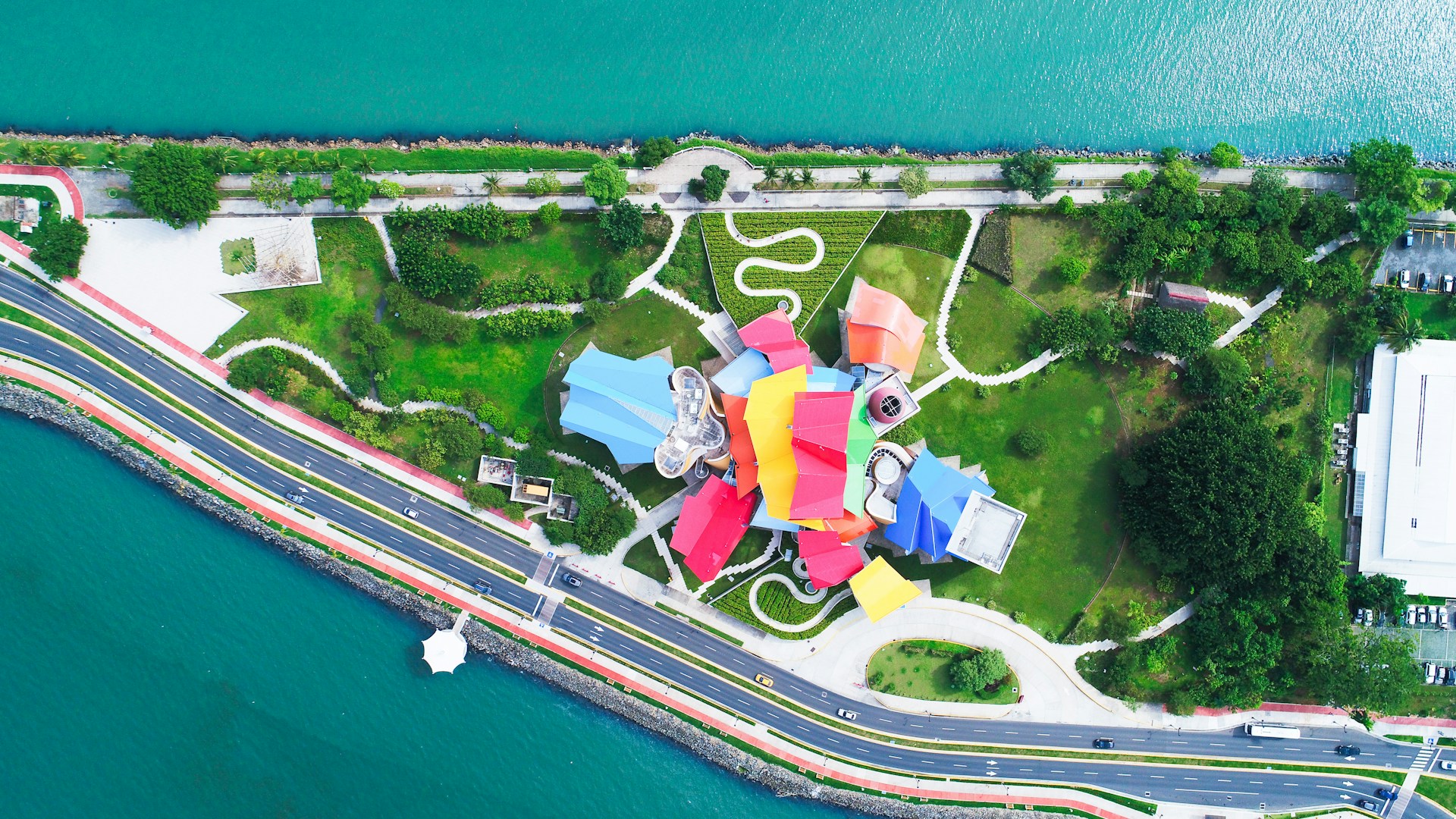
Aerial view of the Biomuseo along the Amador Causeway in Panama City, with its colourful roof overlooking the Pacific / Credit: Benjamín Gremler
Planning Your Authentic Panamanian Journey
Embarking on a journey beyond the beaten path requires thoughtful preparation. From transportation to packing, a little planning ensures a smooth and enriching adventure.
Getting Around: Navigating Beyond Paved Roads and Standard Tours
While major highways connect the main cities, exploring authentic Panama often means venturing onto smaller roads or even waterways. Renting a 4×4 vehicle can provide flexibility for exploring the highlands. For remote areas like Guna Yala or parts of the Darién, domestic flights and boats are essential.
Best Time to Explore & What to Pack: Preparing for Diverse Adventures
Panama has two main seasons: the dry season (mid-December to April) and the wet season (May to December). The dry season is ideal for beach destinations and hiking, while the wet season brings lush, green landscapes and fewer crowds. Packing should reflect the country’s diverse microclimates. Include lightweight, breathable clothing for the humid lowlands, a rain jacket regardless of the season, sturdy hiking shoes, swimwear, and warmer layers for the cool evenings in the Chiriquí Highlands.
Responsible Travel: Engaging Respectfully with Local Communities
As tourism grows, so does the importance of responsible travel. When visiting indigenous communities, always ask for permission before taking photographs. Support local economies by buying authentic handicrafts directly from artisans. Also, eat at restaurants owned by local people. Hire local guides who can provide invaluable insights while ensuring your visit benefits the community directly.
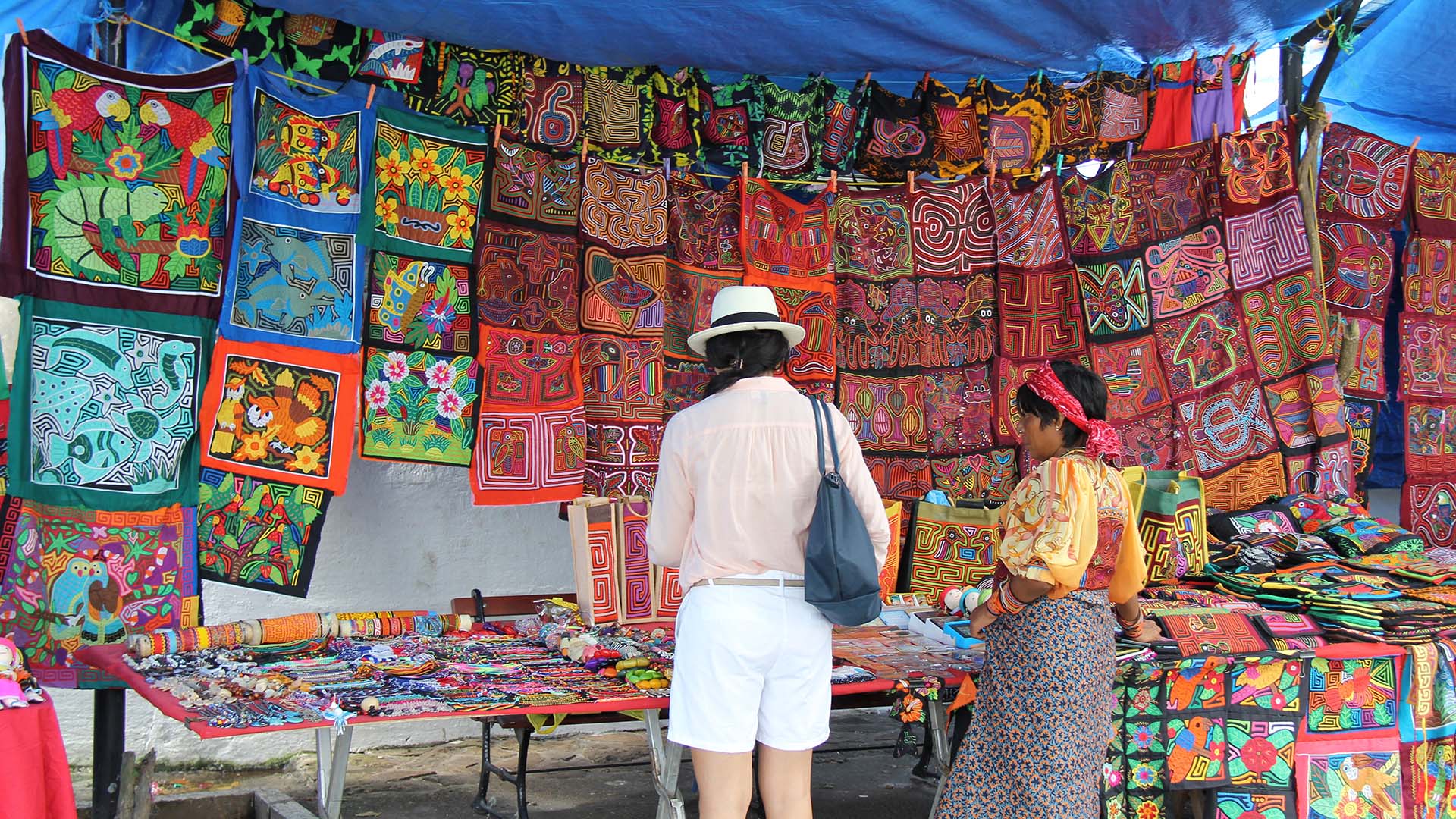
Woman selling Indigenous art in Casco Viejo, Panama / Credit: iStock.com/Chellym
Crafting Your Panama Experience
Panama is a country of striking contrasts, where a modern feat of engineering meets ancient rainforests and living traditions. To truly experience it, go beyond the canal and the capital. Follow winding rivers, hike volcanic peaks, and listen to the stories of its people. Embrace the spirit of discovery, and you’ll find a Panama that’s more vibrant, diverse, and unforgettable than you imagined. Your path between the seas awaits.
Reputable destination management companies in Panama make these experiences seamless. They have strong ties with local communities and can arrange authentic visits, from Embera villages to Coiba National Park, while handling the complex logistics behind the scenes.
Panama is an easy getaway for Canadians. Daily Copa Airlines flights from Toronto and Montreal take about five hours, and the airline’s popular stopover program lets travelers connecting through Panama extend their stay for up to seven days at no extra airfare, taxes only.
For detailed planning support, contact PROMTUR Panama. They offer practical guidance on major destinations, year-round activities, cultural and nature highlights, and tips for first-time visitors.

